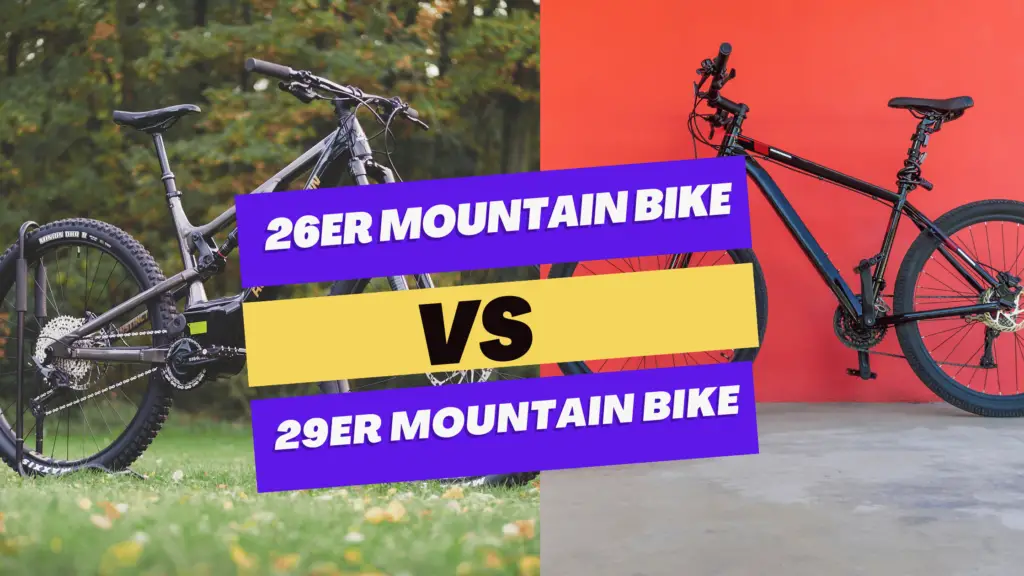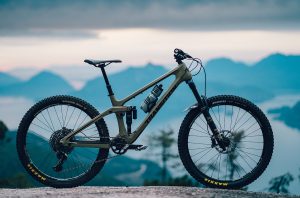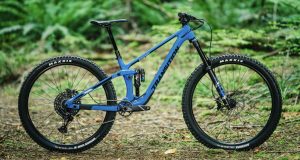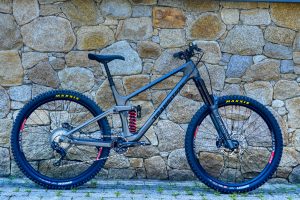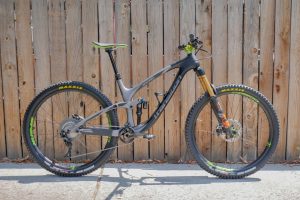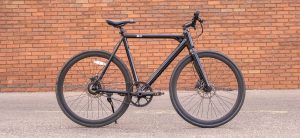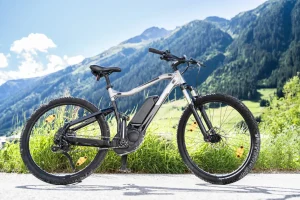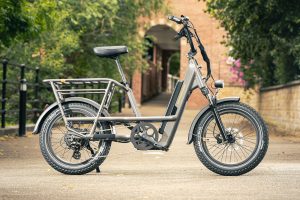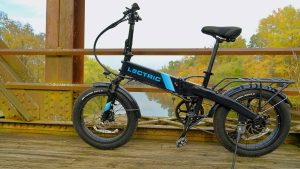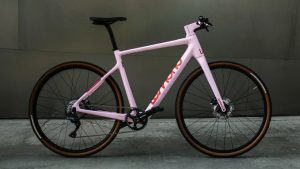If you ride a mountain bike frequently, you’ve definitely heard about the ongoing argument over which tyre size, a 29er vs 26er, is best for mountain riding. Both motorcycles have advantages and disadvantages, making choosing which is best for you difficult. You may make an informed choice by reading this article’s comparison of 29er and 26er mountain bikes.
Introduction
Mountain biking has become one of the most popular outdoor activities worldwide, so mountain bikes are constantly evolving. The 26er used to be the go-to bike for all mountain bikers, but in recent years, the 29er has gained popularity. The debate on which one is better has become a topic of discussion amongst the mountain biking community. So let’s dive in and see what makes these two bikes different.
What are 26er and 29er mountain bikes?
A 26er mountain bike has 26-inch wheels, while a 29er mountain bike has 29-inch wheels. The difference in wheel size may seem insignificant, but it can significantly impact how the bike performs. So following is a comparison of 29er vs 26er.
Here is a brief comparison table of 29er vs 26er:
| 29er Mountain Bikes | 26er Mountain Bikes |
| Larger wheels provide a smoother ride on rough terrain | Nimble and agile handling, ideal for technical terrain |
| Easier to roll over obstacles | Less efficient on rough terrain, requiring more effort to maintain momentum |
| Generally more expensive | Generally less expensive |
| Can be less agile and harder to maneuver in tight spaces | Ideal for downhill and freeride disciplines |
| Better for cross-country rides | Smaller wheels can make it harder to roll over obstacles |
The Pros and Cons of 26er Mountain Bikes
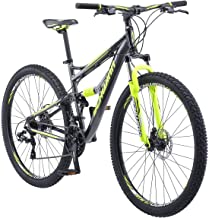
Let’s start with the pros of a 26er mountain bike:
Pros:
- More nimble and agile: The smaller wheel size of a 26er makes it more agile and easier to maneuver through tight corners and technical terrain.
- Lighter weight: A 26er mountain bike weighs less than a 29er, making it easier to handle and control.
However, there are also some cons to a 26er mountain bike:
Cons:
- Limited roll-over ability: Due to the smaller wheel size, a 26er cannot roll over obstacles as easily as a 29er. This can make it challenging to navigate rough terrain.
- Less efficient on rough terrain: A 26er is not as efficient on rough terrain as a 29er. The smaller wheels get stuck more easily, making it harder to maintain momentum.
The Pros and Cons of 29er Mountain Bikes
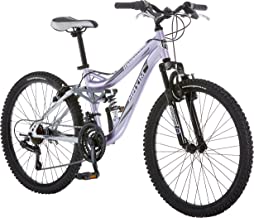
Now, let’s take a look at the pros and cons of a 29er mountain bike:
Pros:
- Better roll-over ability: The larger wheels of a 29er can roll over obstacles more easily, making it easier to navigate rough terrain.
- More efficient on rough terrain: A 29er is more efficient on rough terrain than a 26er. The larger wheels can maintain momentum better and provide a smoother ride.
However, there are also some cons to a 29er mountain bike:
Cons:
- Less nimble and agile: Due to the larger wheel size, a 29er is not as agile as a 26er. It can be harder to maneuver through tight corners and technical terrain.
- Heavier weight: A 29er mountain bike weighs more than a 26er, making it harder to handle and control.
Which one suits you better? (29er vs 26er)
The choice between a 29er and a 26er ultimately comes down to your riding style and preferences. If you prefer a nimble and agile bike that can easily navigate through technical terrain, a 26er might be the better choice. On the other hand, if you want a bike that can easily roll over obstacles and provides a smoother ride on rough terrain, a 29er might be the better choice.
It’s important to note that the debate on which one is better is subjective and varies from person to person. Some riders prefer the agility of a 26er, while others prefer the efficiency of a 29er. It comes down to personal choice.
Now that you know the pros and cons of both bikes let’s see which one suits you better:
Choose a 26er Mountain Bike If:
- You prefer a more nimble and agile bike that can easily maneuver through tight corners and technical terrain.
- You want a bike that is lightweight and easy to control.
Choose a 29er Mountain Bike If:
- You prefer a bike that can easily roll over obstacles and navigate rough terrain.
- You want a bike that is more efficient on rough terrain and provides a smoother ride (29er vs 26er).
Conclusion
According to my personal experience, 29er vs 26er mountain bikes have their pros and cons, and the choice ultimately depends on your riding style and preferences. If you prefer a nimble and agile bike that can easily navigate through technical terrain, a 26er might be the better choice. On the other hand, if you want a bike that can easily roll over obstacles and provides a smoother ride on rough terrain, a 29er might be the better choice.
It’s important to note that the debate on which one is better is subjective and varies from person to person. Some riders prefer the agility of a 26er, while others prefer the efficiency of a 29er. It comes down to individual taste.
Related Informative Topics:
- The Trek 4300 History and Review: Best Entry-Level Mountain Bike
- Battle of the Best: Trek vs Giant vs Specialized mountain bikes
- Can You Put Pegs On A Mountain Bike? Discover the Excitement of Adding Pegs!
- Actual Mongoose Dolomite Weight Limit: Best user guide 2023
FAQs
Is a 29er mountain bike faster than a 26er?
It depends on the terrain. A 29er mountain bike is more efficient on rough terrain, providing a smoother ride and better momentum. However, a 26er might be faster on technical terrain that requires more agility.
Are 26er mountain bikes becoming obsolete?
No, 26er mountain bikes are still widely used, especially in the downhill and freeride disciplines.
Are 29er mountain bikes better for taller riders?
Not necessarily. While taller riders might find it easier to handle a 29er, it ultimately depends on their riding style and preferences.
Can you convert a 26er to a 29er? (29er vs 26er)
Technically, it is possible to convert a 26er to a 29er by changing the wheels and tires. However, it’s not recommended as it can affect the bike’s handling and performance.
Which one is better for beginners, a 26er or a 29er?
It depends on the rider’s preferences and the terrain they plan to ride on. Beginners who prefer a more nimble and agile bike might find a 26er more suitable, while those who prefer a smoother ride on rough terrain might prefer a 29er. It’s important to try out both and see which one feels more comfortable.
Are 29ers more expensive than 26ers?
Generally, 29ers are more expensive than 26ers due to their larger wheels and more advanced technology. However, there are affordable options available for both types of bikes.
Can you do tricks on a 29er mountain bike?
While it’s possible to do tricks on a 29er, it might be more difficult due to its larger size and less agility than a 26er. However, some riders prefer the challenge of doing tricks on a 29er.
Are 29ers better for long-distance riding?
Yes, 29ers are better for long-distance riding as they provide a smoother ride and better momentum, making it easier to cover more ground with less effort. However, some riders might prefer the agility of a 26er for shorter, more technical rides.
